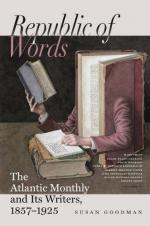“Then,” answered Mr. Sidney, “you are not prepared to believe one other thing, more strange and paradoxical than all the rest. Listen! These notes are forgeries both of the maker and the indorser. And who think you are the criminals?”
“The Jew?”
“No.”
“The cashier?”
“No. But, as sure as you are born, these notes are in the handwriting of Temple and Conway, and the signatures are not only genuine, but they are forgeries also: for both had formed a well-matured and deliberate design of disputing them before placing them on the paper. And, Sir, from my notion of Conway’s character and temperament, as expressed in his handwriting, I venture the assertion that I can make him own it, and pay the notes. He shall even faint away at my pleasure. Temple is another kind of man, and would never own it, were it ten times proved.”
A meeting of the directors of the bank was to be holden at nine o’clock of the same morning. None of them knew Mr. Sidney, or were known by him. It was arranged that he should meet them, Mr. Conway included, and exhibit his skill, and if he should convince them of his power of divination, he should discuss the genuineness of the signatures of the supposed forgeries.
For several hours he was on trial before the board with a very large number of specimens of handwriting of men of mark, and he astonished them all beyond measure by giving the occupation, age, height, size, temperament, strength of nerve, nationality, morality, and other peculiarities of every one of the writers. His success was not partial, it was complete. There was not simply a preponderance of evidence, it was beyond a doubt. The directors did not question the fact; but how was it done? Some thought mesmerism could account for it, and others thought it miraculous.
The first experiment was this. Each director wrote on a piece of paper the names of all the board. Eleven lists were handed him, and he specified the writer of each by the manner in which he wrote his own name. He then asked them to write their own or any other name, with as much disguise as they pleased, and as many as pleased writing on the same piece of paper; and in every instance he named the writer.
As an example of the other experiments, take this one. The superscription of a letter was shown him. He began immediately:—
“A clergyman, without doubt, who reads his sermons, and is a little short-sighted. He is aged sixty-one, is six feet high, weighs about one hundred and seventy, is lean, bony, obstinate, irritable, economical, frank, and without a particle of hypocrisy or conceit. He is naturally miserly, and bestows charity only from a sense of duty. His mind is methodical and strong, and he is not a genius or an interesting preacher. If he has decided upon any doctrine or construction of Scripture, it would be as impossible to change him as to make him over again.”




